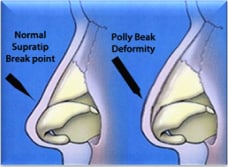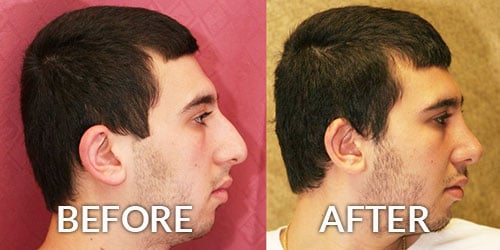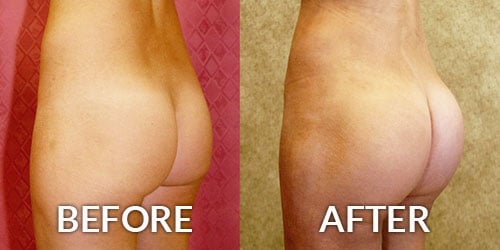Pollybeak Rhinoplasty – Polly Beak Nose Deformity Treatment
Consultations offered at our three convenient locations in Encino, Glendale and Bakersfield

In cases of soft tissue Pollybeak deformity steroid injection to the nasal tip might help to reduce the excess swelling or scarring. On the other hand, treatment of cartilaginous Pollybeak deformity requires Revision nose surgery, at which point the excess cartilaginous septum is trimmed and/or the nasal tip is elevated and supported with cartilage grafts.




